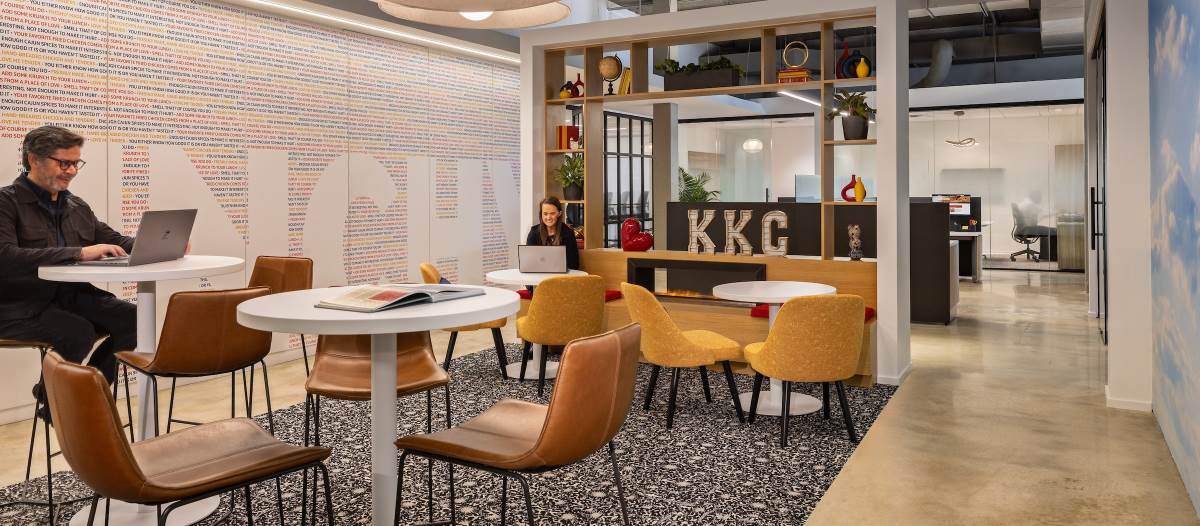Book Review
Healthy Buildings: How Indoor Spaces Can Make You Sick―or Keep You Well

In 2020, a global pandemic came to fruition and thus created a new thirst for the understanding the science of health in interior environments.
Joseph G. Allen and John D. Macomber’s book Healthy Buildings was so critical to the understanding of the cause and prevention of the virus, COVID-19, that a second edition was published in October 2022 to include new findings on pandemic resilience.
Allen is the director of Harvard University’s Healthy Buildings program and associate professor of the Harvard T.H. Chan School of Public Health. He has lead research studies on buildings and health for many years and came to the public’s attention in 2016 when his COGfx study on air quality and the mind was referenced in a Newsweek cover story titled, ”Is Your Office Killing You?” This six-day study conducted by his Harvard team and SUNY Medical University in a total indoor air quality (IAQ) Lab included 24 office workers whose business skills’ effectiveness during different environmental controls were tested under varying air ventilation conditions. When the test subjects were exposed to increased ventilation rates there was a pronounced increase in cognitive skills and lower levels of anxiety. In that same year, another study on ‘buildingomics’ was published by the team concentrating on ‘green buildings’ which proved their value to offices, and was applicable to other building types like schools, hospitals and homes. To understand more about these studies, access a link from Carrier, a sponsor, which is a digital summary of the research (thecogfxstudy.com).
Macomber is a senior lecturer at Harvard Business School.
Together, they created two editions of Healthy Buildings (2020 & 2022) written for professionals working in the built environment. This work is a call to action, as pointed out by the New York Times’ Tara Parker-Pope in her review, as it not only provides awareness of the importance of both green and healthy buildings, but gives specific economic justification for investing in improvements to buildings to make them livable, and specific practices supported by scientific research for interior designers and operators to follow.
To raise awareness of scientific impact on interior spaces, the first edition of the book received an amazing amount of media coverage from newspaper, television coverage and endorsements from field experts. For example, Sir Norman Foster, one of the few ‘starchitects’ in the world today said, “This book should be essential reading for all who commission, design, manage and use buildings-indeed anyone who is interested in a healthy environment”. This same message was picked up by the U.S. federal government as the White House sponsored the first Summit on IAQ with Dr. Allen as a keynote speaker. He was introduced to the FM world as a keynote at IFMA’s World Workplace in 2021.
Healthy Buildings
The 2022 edition is divided into two parts. The beginning section is a general background concerning the context, facts, research and reasons why no progress has been made to date. The second part reveals the scientific research, case studies and best practices. This section also includes a new chapter on the work that Dr. Allen and team did during the pandemic and practices they suggest as a result.
Part I: The Case for Healthy Buildings explains the context for this work, describing today’s 10 global mega-changes affecting the healthy buildings movement including:
-
A focus on buildings as a place which can cause or spread illness or aid in well-being;
-
The changing work environment emphasizing the human experience and up for grabs as to who is responsible for the health and well-being of its inhabitants (FM, HR);
-
The new technologies available thanks to the rapid evolution of building science;
-
New values invading our capitalist society particularly ESG (environment, social, government) practices.
The second chapter explores the economics of a healthy building. While 90 percent of a human's life is spent in buildings, it is also these humans who organizations spend 90 percent of their budgets on. Therefore, the authors prove that by increasing productivity and lessening absenteeism, it makes economic sense to invest in improvements to buildings to ensure people are all in the best shape to do their jobs.
The last chapter in Part I explores the reasons why it has taken so long for these facts to change the way we treat buildings in this $9 trillion global industry. These include:
-
Lack of scientific and economic facts communicated to the right stakeholders (information);
-
The slow-moving nature of the entire industry to make changes due to the many different building types across very different geographies around the world (inertia);
-
the huge constellation of players in this complex industry (incumbents);
-
The lack of motivating factors to do the right thing (incentives).
Part II: A Healthy Building Strategy should be read by all FM professionals and stakeholders in the built environment. It is a primer for best practices for UN Sustainable Development Goal 3: Health and Well-being, SDG 9: Industry, Innovation and Infrastructure, and SDG 11: Sustainable Cities and Communities.
This section begins with a diagram and descriptions of the 9 Foundations of a healthy building:

Following these elements are chapters on chemical concerns, existing certifications and new ideas for measurement. The chapter on chemical problems is staggering as 80,000 chemicals are found in commercial applications today and, shocking since there are only a few that EPA has banned. There is hope that this will change with the advent of the acceptance of the Living Building Future Institute’s (LBFI) Declare label for product transparency, and its Red List Items on the Red List are the worst-in-class materials, chemicals and elements known to pose serious risks to health. In the chapter on certifications, those by WELL, FITWEL, RESET and LEED are listed. However, there is another important LBFI program, ‘the Living Building Challenge’ which provides certifications relevant to a building, including the 7 Petals: energy, water, materials, health, beauty, equity and place.
The new chapter in the 2022 edition, “Buildings are the First Line of Defense against Covid and Other Airborne Infectious Diseases” was sub-headed with a quote from nursing pioneer Florence Nightingale who had ascertained that cleanliness and fresh air were defenses against diseases. Somehow we lost this knowledge in the modern architecture era when our glass boxes sealed us up in tightly controlled environments which led to the sick building syndrome. When it was conclusively proved that SARS-CoV-1 was transmitted by air, it became evident that ventilation, filtration and indoor humidity levels were incredibly important. This chapter includes a hierarchy of control framework with variable business impacts (p. 157), where FMs have the most authority now and we are all aware of the nature of airborne transmission of viruses in our buildings.
The last two chapters summarized the ”nexus of buildings: energy, health, climate and resilience,” and where we go from here. While Alphabet was mentioned, it is not the Sidewalk Labs project in Toronto (never built) which should have been identified, but rather the new Google healthy building campus in Silicon Valley. The quote that appears under the title of the last chapter in the book is from Foster, “We need a new generation of humanitarian design ideas underpinned by scientific research.” This new generation could not be better realized than by the design of the new Google buildings which are the realization of the authors ideal of the ‘nexus of buildings’ made possible by the wealth of one of the largest companies in the world.
Bay View, the new Google headquarters, was co-designed by architects Bjarke Ingels (BIG) and Thomas Heatherwick (Heatherwick Studio). It consists of 1.1 million square feet on more than 17 plus acres of landscaping. Innovation is paramount throughout the regenerative design from its canopy superstructure with 50,000 solar panels in the dragonscale roof generating energy and minimizing thermal heat gain to its two floors with 20 acres of open space. It is a rethinking of a work environment as both human-centered and sustainable. The bayscraper is both LEED and LBC Water Pedal certified (or in process) using biophilic design principles. It is truly a living lab with flexibility to adapt to changing requirements, as well as ensuring the 9 Foundations of a healthy building are addressed.
Conclusion
While Allen and Macomber’s book is an excellent primer for understanding the science of spaces, it would have been even better if Harvard’s Graduate School of Design (GSD) academic unit been involved. In their formula for a healthy building, the one missing ingredient is architecture (which encompasses building science). The science of space combined with the beauty of design yields the most successful healthy building, as proven by Google’s human-centered regenerative office bayscraper opening in 2023.

Nancy Sanquist, IFMA Fellow, is a professional involved in the built environment for the last few decades. She is the Past Chair of the IFMA Foundation, with which she has worked for the last six years. She is a co-founder of the Global Workforce Initiative (GWI) and the Workplace Evolutionaries, and is the author of many articles and co-editor of books on FM/CRE, technology, architecture, urban planning and maintenance including the award-winning book series titled “Work on the Move (1&2).” She is working on a new book on “Reimagining Place in the 21st Century.”
Read more on Occupancy & Human Factors and Risk Management
Explore All FMJ Topics









